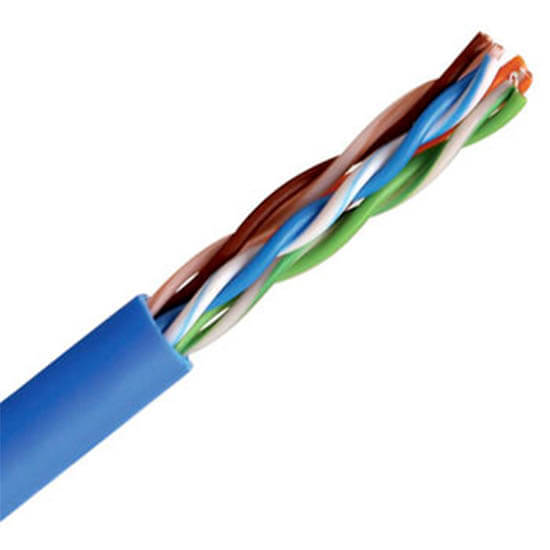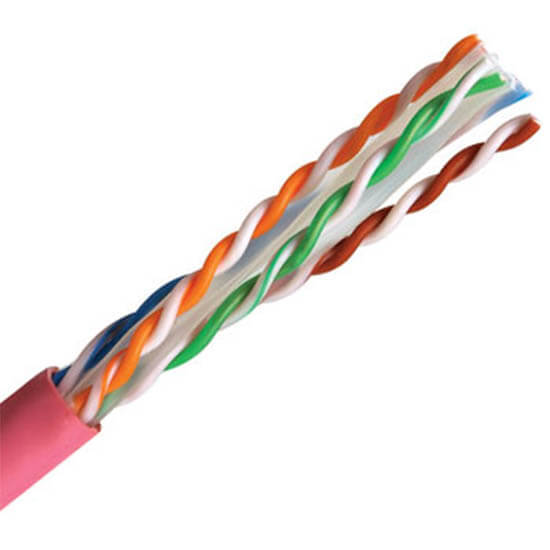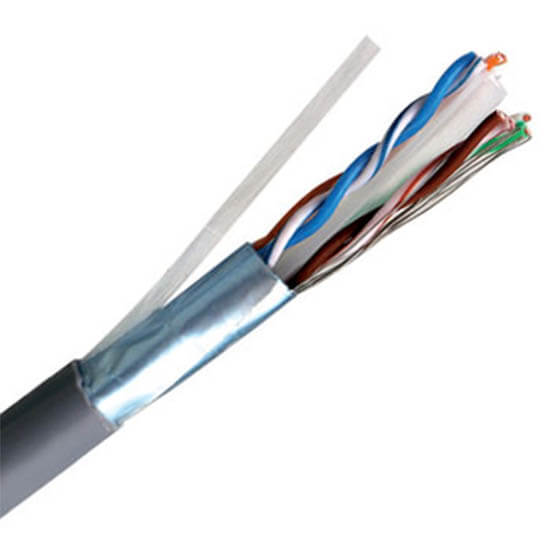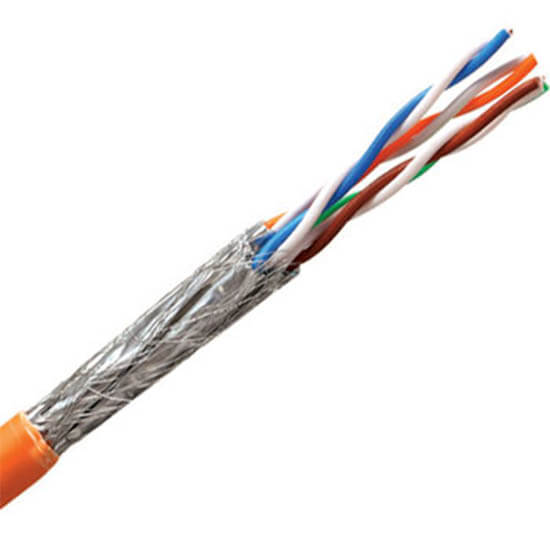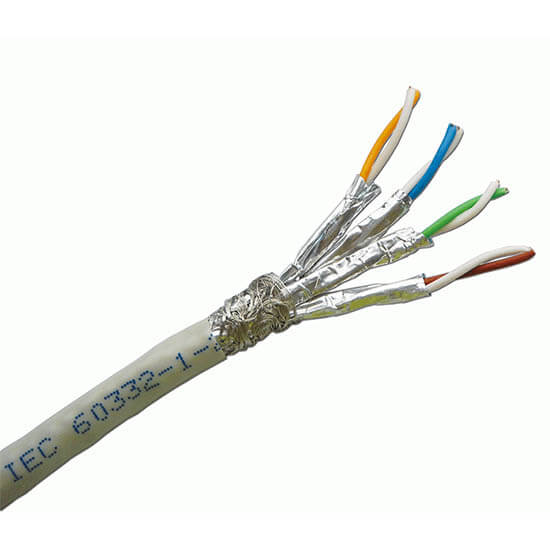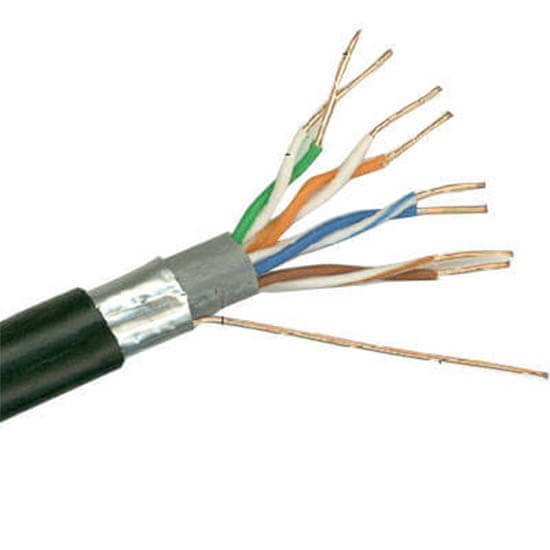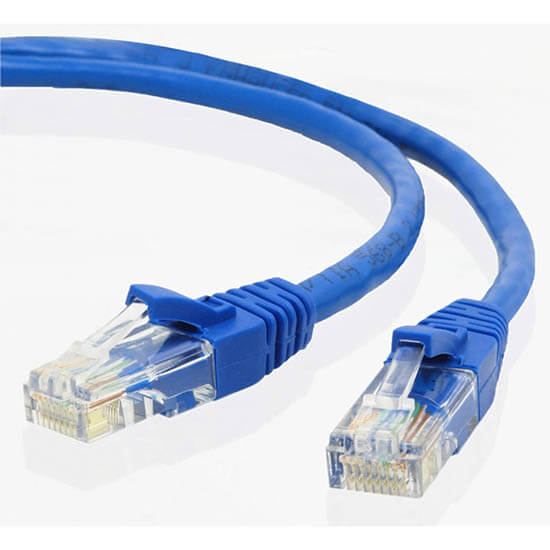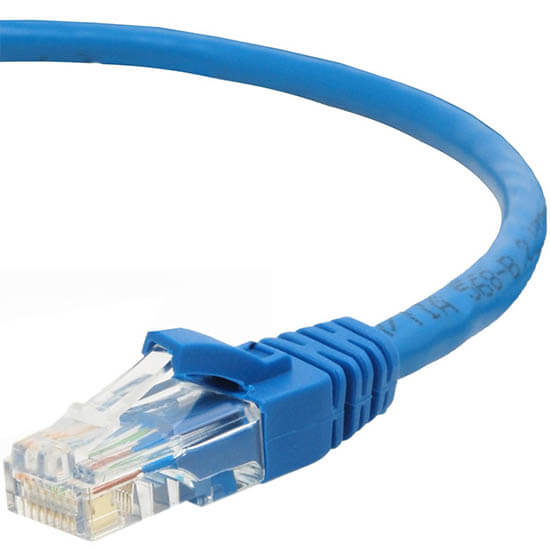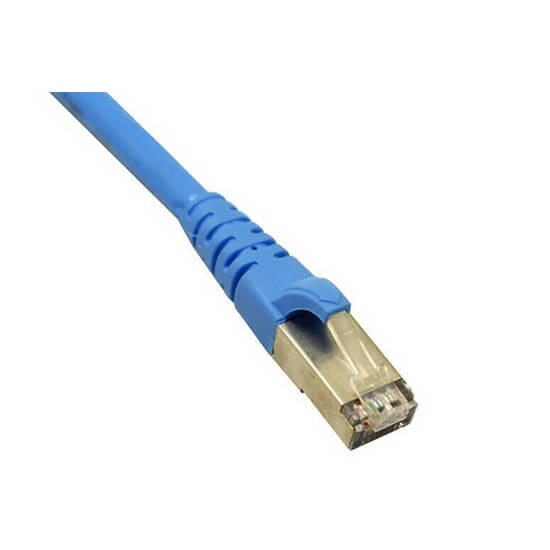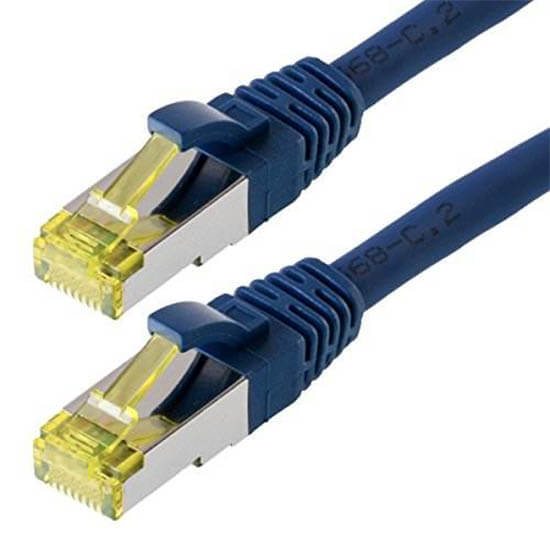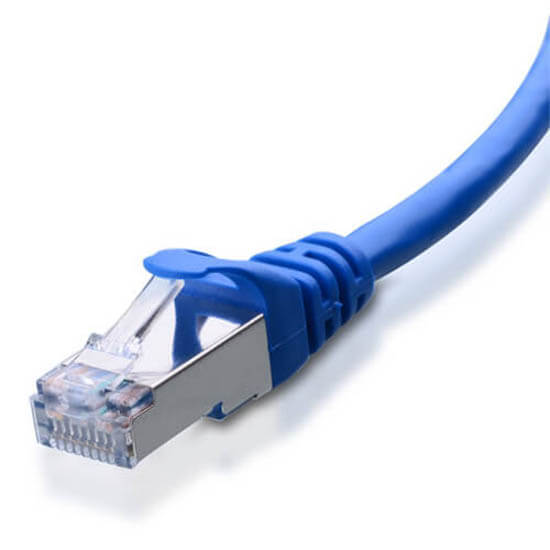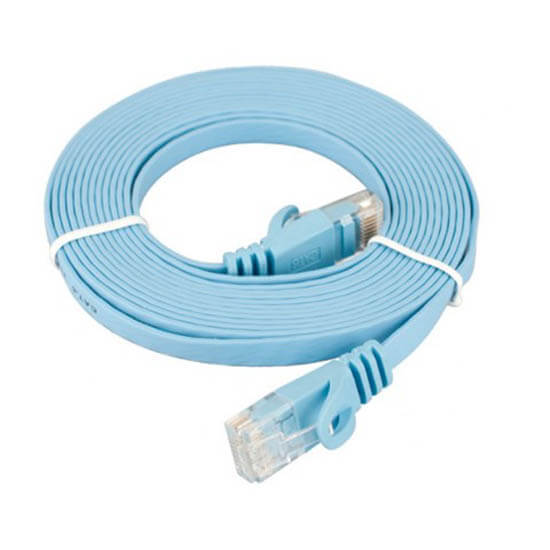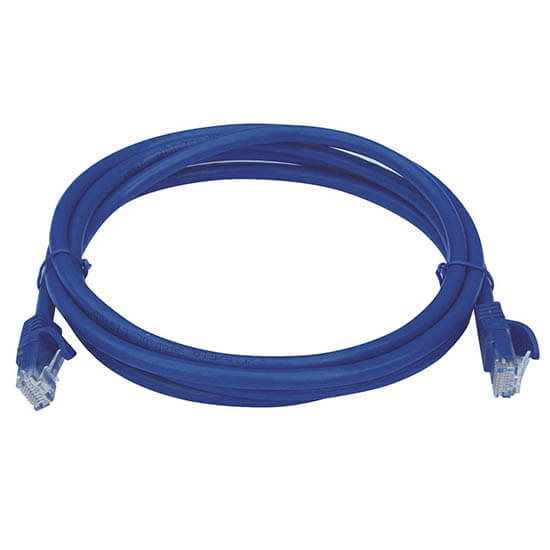LAN Cables
OTSCABLE is a communications networks LAN cable manufacturer in various type such as: bulk cable and patch cable. OTSCABLE offers high quality Cat5e, Cat6, Cat6a, Cat7, Cat8 bulk & patch cable. UTP (Unshielded twisted pair), FTP (Foil twisted pair), SFTP (Shielded and Foiled Twisted Pair) types of copper Ethernet cable and Flat & Ultra patch cable are available.
LAN Cable
Designed for setting up small ethernet and communications network to industrial installations, OTSCABLE LAN cables assure the best performance even in the harshest environments.
The LAN Cable is the perfect solution for high-density datacenter applications. You can never go wrong with choosing OTSCABLE LAN cables to support your network and communication connection needs.
OTSCABLE is a specialized LAN Cable manufacturer, exporter and leading China wholesale supplier with more than 17 years of experience in manufacturing all kinds of network cables. We offer factory-priced, high-quality pure copper Ethernet cables for superior speed, performance and reliability.
We provide a wide range of LAN network cables to choose from, ranging from Ethernet cable, thin ethernet cable, fiber optic cable, telecommunication cable and twisted pair LAN patch cable. Our LAN cables are also offered in a wide variety of lengths, colors, and bulk or patch options to suit your specific needs.
We take pride in our company’s expertise in manufacturing LAN cables that deliver the highest-quality and competitive performance with after-sales service
What's a LAN? (LAN Definition)
An introduction to the essential concepts of a LAN
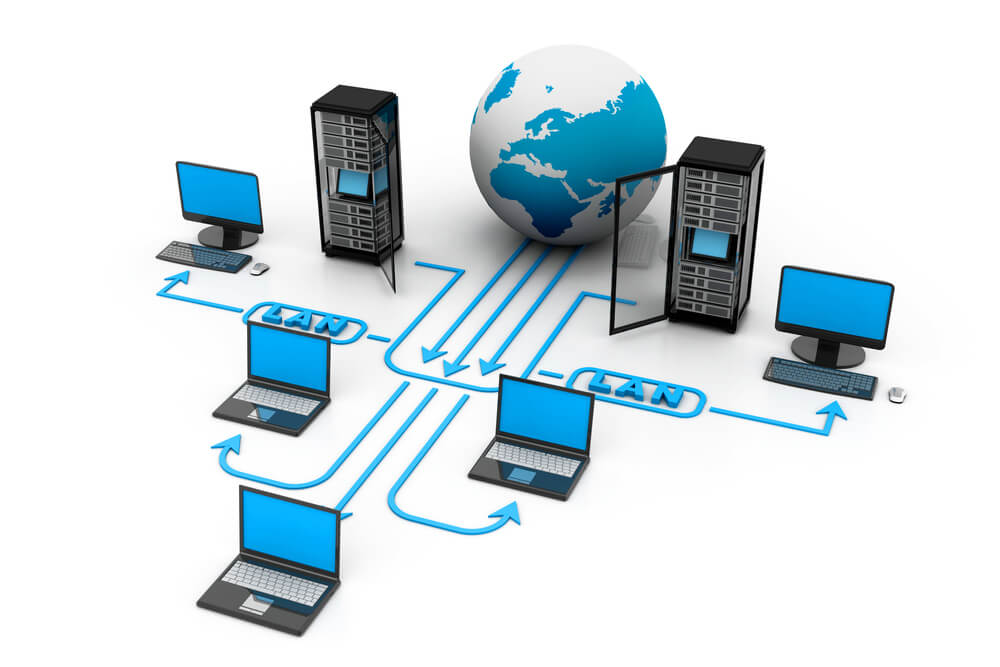
Local Area Network or LAN for short is a network or group of computers and associated devices that share a common communications line or wireless link in a limited area, such as in an office building, school or house. The function of the LAN is to enable sharing of data and resources like files, printers, games, applications, email or internet access.
LANs are usually built to enable the sharing of resources and services like files, printers, games, applications, email, or internet access.
Technologies Commonly Associated with LAN
In this modern age, LANs either used Wi-Fi or Ethernet for connecting two or more devices together.
Wi-Fi LAN and Broadband Routers
The Wi-Fi LAN can operate multiple wireless access points whenever the device detects the signal range of the Wi-Fi. On the other hand, the LAN we find at home or the wireless broadband routers perform the functions of an access point.
Ethernet LAN Components
The typical Ethernet LAN has hubs, switches, or routers that individual devices connect to through LAN cables.
Because of their low-cost and speed requirements, Ethernet and Wi-Fi are preferred in most businesses and houses, but a LAN with fiber connections can also be used.
Benefits of LAN
Since sharing is a major role of a local area network, it's clear that this type of network means faster communication. Not only can files and other data be shared much more quickly if they stay within the local network instead of reaching the internet first, but point-to-point communication can be set up for even faster internal communication.
Are LAN and Ethernet the Same?
Can you connect an LAN Cable to an Ethernet port?
According to IEEE, Ethernet is a technology for wiring or cabling configurations in data networks which connects software and/or hardware with each other. This connection takes place through LAN cables, which is why Ethernet is sometimes referred to as LAN technology.
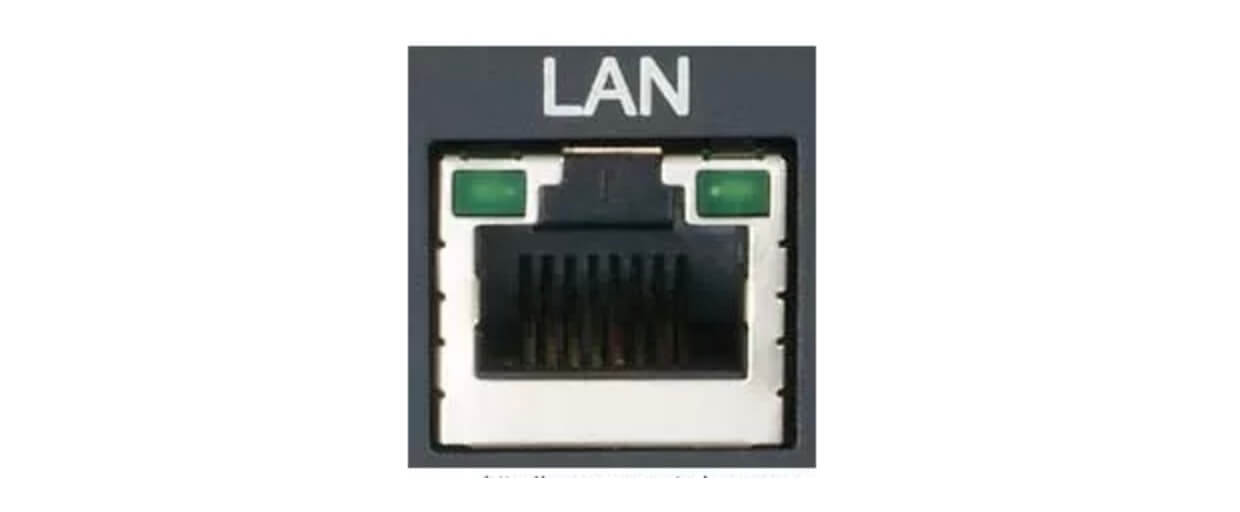
Computers, laptops and consumer electronics usually have an Ethernet port for connecting the device to a wired network. A LAN port is an RJ-45 Ethernet socket where all client machines, servers and network devices on the local network are cabled to.
OTSCABLE LAN Cable Manufacturing Process
With our company’s expertise in cable production, our in-house cable manufacturing process produces the best premium LAN Cables for network and communication cabling
Step #1 Wire Diameter Reduction Through A Series of Wire Drawing Processes
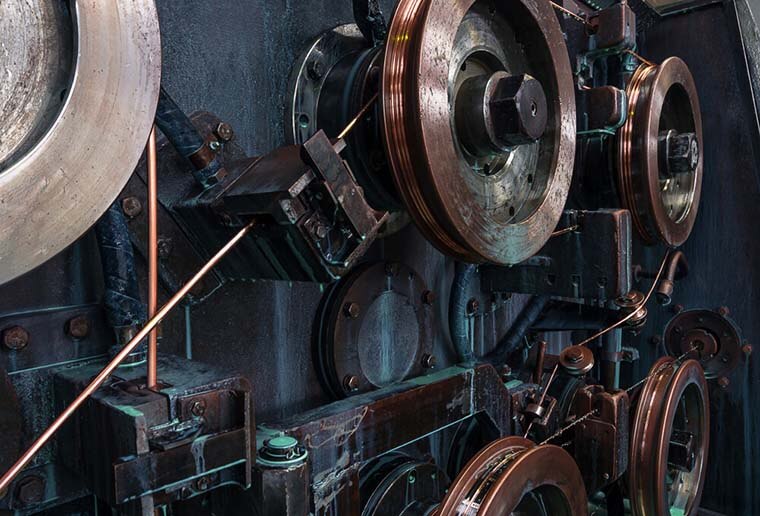
1st Wire Draw
The first step in manufacturing LAN cables is wire drawing. Wire drawing is a process in which the wire is drawn through a die so as to reduce its diameter and increase the length. As this happens, its volume remains the same.
The dies are flooded with lubricant which also serves as a coolant, increasing the life of the dies and keeping the copper wire from overheating.
The result of this process is a 5000 ft of coil of 10, 12, or 14 AWG copper wire.
2nd Wire Draw
The copper wire produced in the first draw will then be transferred to an insulating area of the plant where a second wire draw will be done followed by annealing, before the application of insulation to the copper wire.
In the second wire draw, the size of the wire is reduced to 19, 22, 24, 26AWG or to any size needed.
Step #2 Softening the Wire Through Annealing
From its brittle state after drawing, the wire needs to be annealed to make it ductile. Annealing is simply the process of heating the copper to a certain temperature then slowly cooling it.
At this stage, the wire submerged in water is heated up to 1000 deg F for just a moment before taking it out of the water. Submerging it in water prevents oxidation and corrosion of the metal.
Step #3 Wire Extrusion and Insulation
The next step requires the wire to be passed through an extruder where either a single or double coating of plastic is applied. High-density polyethylene pellets are fed into the extruder, heated and mets.
Step #4 Wire Diameter and Insulation Testing
Before the reels move to the next manufacturing operation, wire and insulation diameter are measured, and the wire is tested for electrical properties as capacitance and resistance.
Step #5 Wire Twisting and Stranding
In this step, the insulated wires are twisted into wire pairs. Each pair has a unique twist length to avoid crosstalk and interference.
The wires will now be tested for electrical defects such as crosses, shorts, and opens.
Step #6 Cabling
At this stage, the wires that came out from the stranding process are grouped together forming a multi-unit cable core. The units are also twisted together on a rotating core truck to help control electrical interference and provide flexibility.
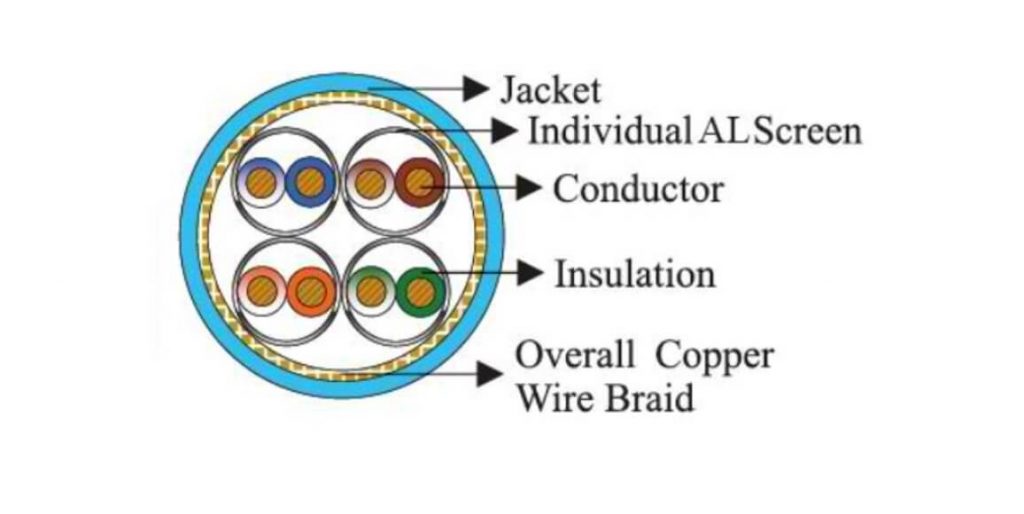 Image source: http://www.zjhdcable.com/cable-industry-news/cat7-lan-cable/
Image source: http://www.zjhdcable.com/cable-industry-news/cat7-lan-cable/
Step #7 Jacketing
At jacketing, several operations such as gel-filling, armoring, jacketing, and printing are performed to produce the finished cable.
Gel-filling and Armoring
The cable core is heated ensuring that the filling compound penetrates possible voids. A filling compound is added into the heated core in the filling chambers. Then finally, a plastic core is wrapped around the cable.
Metal Sheathing
Depending on the cable design, a protective metal sheathing of either aluminum or aluminum and steel combined may be added during this manufacturing step. The aluminum acts as a grounding path for high-voltage surges that may be caused by lightning strikes and other eventualities in aerial cables, while steel adds mechanical protection for buried cable against pests such as rats and gophers.
Extrusion of Outer Cable Jacket
The outer cable jacket is extruded in the next step. It is usually made from low-density polyethylene, black in color and resistant to ultraviolet light in case it is exposed to sunlight. This rugged plastic is the final protection for the enclosed cable against the environmental conditions underground or when strung to utility poles.
Cooling and Finishing Touches
The jacketed cable then passes through a temperature- controlled water trough, which cools the jacket. The cable is dried, and the top layer of the jacket is heated slightly so that printer markings can be imprinted on it. Because of the heating, the markings are stamped into the jacket itself and will last the life of the cable.
Step #8 Cables Tested Before Shipping
Upon exiting the jacketing operation, the finished cable is wound onto metal or wooden reels and then transported to the final test facility.
Physical Inspection of the LAN Cable
An inspector checks for proper placement of units, subunits, and spare pairs within the cable.
Electrical Test
Electrical tests include a ring-out of all conductors for continuity, and a core-to-sheath test. The core-to-sheath test measures minimum voltage requirements between the cable core and the metal sheath; this helps ensure that high-voltage surges, such as lightning strikes, cannot reach the conductors. A high-voltage test is also performed, and all conductors are checked for electrical integrity. Random tests are performed for mutual capacitance, unbalance, and resistance.
Shipping
Preparing the cable for shipment may include sealing the cable end with a steel or plastic cap, and testing air-core cables for integrity. Such cables are equipped with valves so that dry, pressurized air can be pumped into them to protect them from moisture.
Quality Control
“If a thing’s worth doing, it’s worth doing well,” as quoted by a Chinese proverb.
OTSCABLE not only assures the best quality LAN Cables are delivered into the market, but also upholds an environmental responsibility of disposing raw materials, in-process products and end-products which can potentially harm the environment.
OTSCABLE follows a round of quality checks throughout the production process from raw material acceptance to production and to end-products processing prior to shipping.
Raw-Material Quality Control (RMQC)
High-quality raw material is paramount in delivering standard-wise end-products. Upon delivery of the raw materials (copper wires, etc), they go through IDC inspection that determines whether they pass or fail. Failure to meet specific standards will automatically reject the raw materials.
Production Quality Control (PQC)
Mass producing LAN cables from the raw materials stored in the warehouse is carried out in the production area.
A certain procedure for testing the cables would be by randomly picking a 90-m cable and by fluke testing it for on-contact to contact voltage, continuity detection and open jaw current detection. Also, the connectors are checked if they conform with T568B standard.
OTSCABLE also carries out a series of quality checks in the production area whether daily, weekly, monthly or yearly. This is to check if certain measures should be done in their machines or manufacturing process should be improved or fixed to meet safety standards for both the process and their employees.
In-Process Quality Control (IPQC) and Unfinished Product Quality Control (uPQC)
These are checks that are carried out during mass production is completed. In-process materials are tested for identity, strength, quality and purity as appropriate and approved or rejected by the quality control unit during the production process.
Quality Control Before Packing and Final Quality Control
Before LAN Cables are packed or boxed, the QC unit checks the products for possible cracks, breaks and cable connectivity. The cables are also physically inspected and tested (electrical tests are ran).
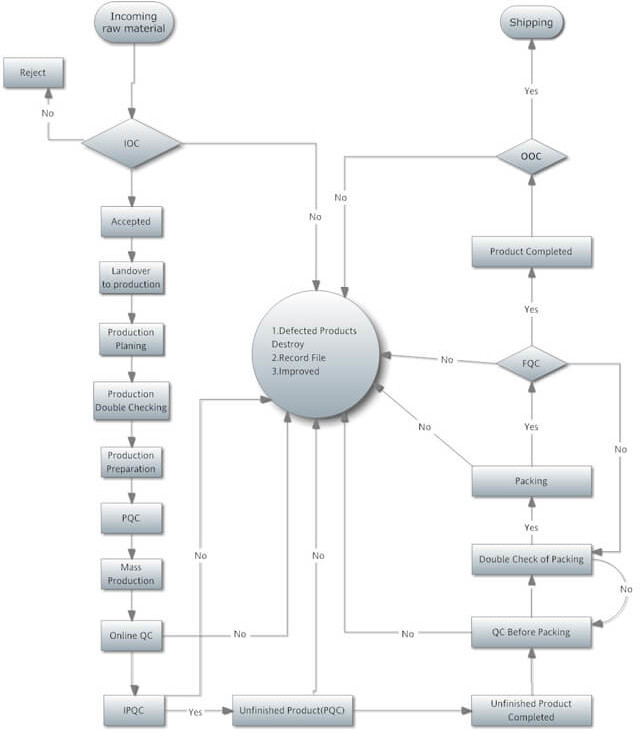
Certifications
CE Approved
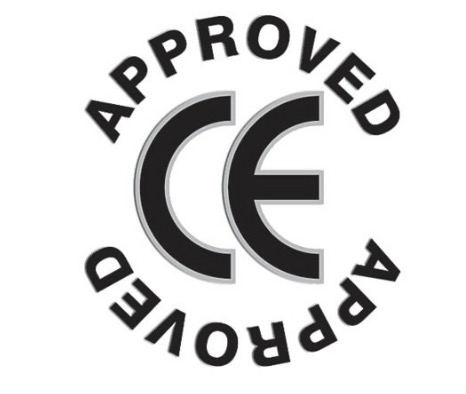
CE marking indicates conformity with health, safety, and environmental protection standards for products sold within the European Economic Area (EEA), however, this is also recognizable worldwide.
Rohs

RoHS stands for Restriction of Hazardous Substances. A RoHS listed product means the product has passed qualifications preventing the use of banned hazardous materials electrical and electronic products. These materials are hazardous to the environment and cause pollution to landfills. Moreover, they are dangerous when exposed during manufacturing and recycling.
UL
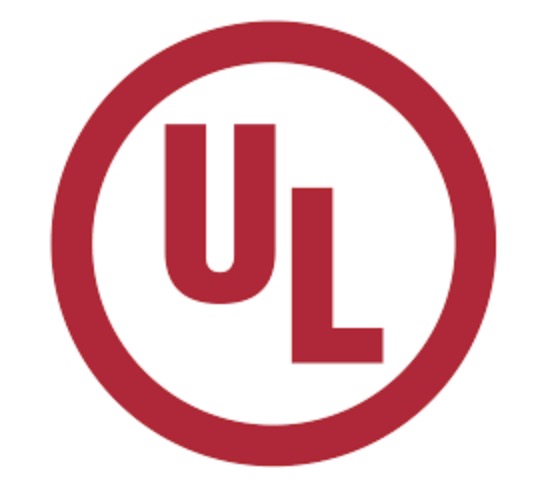
Underwriters Laboratories (UL) is a Nationally Recognized Testing Laboratory (NRTL) recognized by the Occupational Safety and Health Administration (OSHA). As an NRTL, UL devises, publishes, updates, and maintains minimal standards that certain types of products: magnetic components, electronics, plastics, potable water, and and others.
ETL
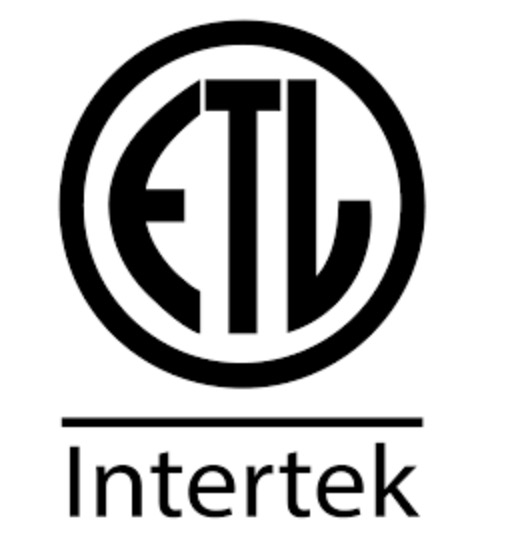
Electrical Testing Laboratories (ETL), is a company testing for Standards for Safety for a wide variety of electronics components and products. Like UL, ETL is an OSHA recognized NRTL. ETL tests components to the published standards of other NRTLs, including ASME, ASTM, and UL.
Features
Safe, Halogen-free Components
Our Ethernet and telecom LAN products are offered in Low Smoke Zero Halogen sheaths and manufactured with compliance to ROHS safety standards for wires and cables.
A Variety of insulation options for excellent wet electrical performance, oil and chemical resistance and extreme temperature flexibility
Materials for the LAN cables feature an insulation of HD polyolefin, grouped with drain wire under Polyester tape and Al-foil/polyester tape.
A Variety of jacket options for excellent resistance to oil, outdoor sunlight/UV, flame and extreme temperatures
Further protection is added by a thermoplastic and UV resistant PE sheath.
Different conductor options provide increased, greater flex life and corrosion resistance
Supports Power over Ethernet (POE) Technology Requirements
LAN connections in conjunction with PoE technology simply cut costs of network deployment and offer exemplary management capabilities that enable network administrators to significantly improve ongoing infrastructure reliability while cutting operational expenses.
PoE technology further delivers up to 60 watts of safe, uninterrupted power at voltages from 50 to 57 volt (V) levels over the existing local area network (LAN) infrastructure, in support of the IEEE 802.3at-2009 standard.
Types of LAN Cable
OTSCABLE Lan Cable is composed of 4 pairs of conductors wound with AWG copper wires ranging from 23-34 and comes in different colors. It is offered in either in bulk
Industrial LAN Network Cable
- OTS Bulk and Patch cables are offered in Cat5, Cat5e, Cat6, Cat6a, Cat7 and Cat8 which covers all up to date network applications.
- Ultra Patch and Flat Patch are some of OTS special patch cables.
- OTS also offers outdoor bulk cables. LAN Cables are offered as shielded or unshielded, twisted or untwisted pairs.
- Patch cable assemblies are specifically pre-assembled and fitted with RJ-45 connectors, on which these can be used on various types of patch panel type applications.
Main Category Differences and Speed Grading
- Cat5 offer speeds of up to 100 Mbps and operates at a frequency of 100 Mhz
- Cat5e offer speeds of up to 1 Gbps and cat5e also operates at speeds up to 100 Mhz; can be used for gigabit ethernet
- Cat6 offer higher speeds up to 10 Gbps, 10 Gigabit speed is generally achieved with cable lengths, up to and around 50 meters. However Cat6 cable with lengths of 50 Metres and above, the speed rate then drops to 1 Gigabit per second, Cat6 cables will also run at a frequency up to 250 Mhz.
- Cat6e also offers speeds of up to 10 Gbps, with no length restrictions, comparing with Cat-6, Cat-6e cables run at a frequency of 500 Mhz.
- Cat7 offers speeds up to 10Gbps and runs at frequencies up to 600Mhz
Benefits
Huge Savings on Material, Labor and Maintenance
Thanks to the modular design of OTS LAN cables, installation is fairly quick and easy and a lot of time is saved. Initial set-up costs are reduced, greater reliability and easier and more efficient cable management is expected requiring less maintenance.
Superior Electrical Performance
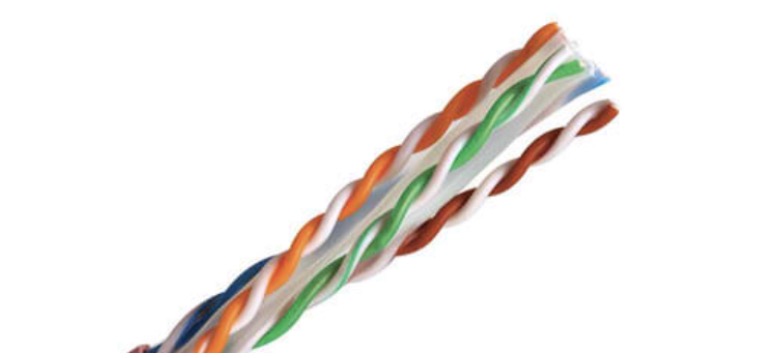
Electrical performance is best achieved as the twisted conductor pairs are gap-free. This means that the conductor-to-conductor spacing, or centricity, is kept uniform, offering excellent and consistently reliable movement of electrical signals.
High Reliability and Performance with Superb Connectivity
OTS LAN cables never fall short of providing reliable connectivity, even in events of losing power or when the wires are damaged. This makes LAN cabling the system of choice to be absolutely certain that networks will continue to function properly when needed.
Ease of Splicing/Connection
A space allowance is provided for handling the cable in an easier and safer way to facilitate splicing/connection.
Provides Incredibly Fast and Reliable Communication and Network Speed
The biggest benefit of choosing a wired LAN network over wireless connections is the increased speed that it offers, promoting maximum work uptime.
Minimized Latency
Increased in latency is something we don’t want in network connections as it is a form of delay that occurs when signals travel back and forth is a connection. Latency is much more minimized in OTS LAN or ethernet cables providing sturdy signals between two connections.
Energy Efficient
OTS LAN cable can support or cope with the requirements of delivering power and signal through PoE (Power over Ethernet), resulting to up to almost 50% energy savings compared with traditional network powering infrastructures.
Increased Security
Wired LAN connections provides increased security for users as there are no ways hackers can access through it.
Application
LAN cable is used to connect high-speed DSL or cable internet connections and to access and share devices such as printers.
LAN cables can be used in the following applications:
- Router Connections
- Printer connections
- DSL
- Laptop connections
- Telecommunication equipment
- Other computer related products
- Ethernet hubs
- Voice and data transmission
- Workstations
- Gaming stations
Frequently Asked Questions
Here, we’ve gathered questions that are commonly asked about LAN Cables, product order and product samples. Feel free to drop us a question if you didn’t find what you are looking for below.
LAN Cable FAQs
How can I choose the right ethernet cable?
First, determine the speed of your internet connection. An old ethernet cable cannot be able to sustain you if you have an internet running on a gigabit. But if you have a slower connection, like 10 or 20 megabits per second, you can get Cat 5.
Next, consider the speed you need for your network. If you happen to move files frequently or you video stream most of the time, a high-bandwidth is required so a better Ethernet cable can be better.
Finally, consider your router. A Cat 6 or newer is usually used as routers rarely support more than gigabit Ethernet, but some may use Cat 5e.
Does Ethernet use all 8 wires?
LAN cables/Ethernet cables have eight wires (four pairs) but only four (two pairs) of these wires are actually used, under 10BaseT and 100BaseT standards (10 Mbps and 100 Mbps, respectively) . One pair is used for transmitting data and the other pair is used for receiving data.
What is 10GBASE-T and Why Is This Technology So Important?
10GBASE-T is a type of Ethernet signaling that provides speeds that go beyond 1 Gb per second for a hundred meters. This capability can be able to provide about 10G on the desktop for data centers. Increase bandwidth opens the door for developers to grow essential applications.
How To Wire and Crimp RJ45 Connector for T568B Ethernet Standard
T568A and T568B are the two colour codes used for wiring eight-position modular plugs. At OTSCABLE, we typically follow these two types of color coding. Both are allowed under the ANSI/TIA/EIA wiring standards. The difference between these standards is that the orange and green pairs are just interchanged.
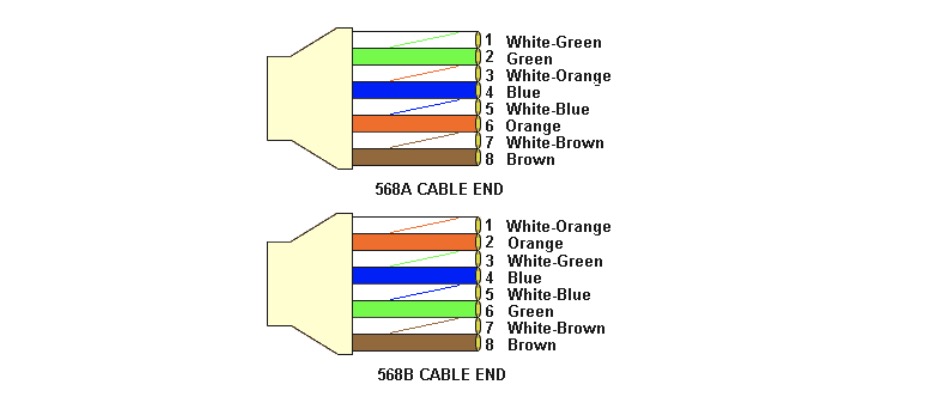
Upon wiring the connector, the following layout is followed conforming to the T568B standard.
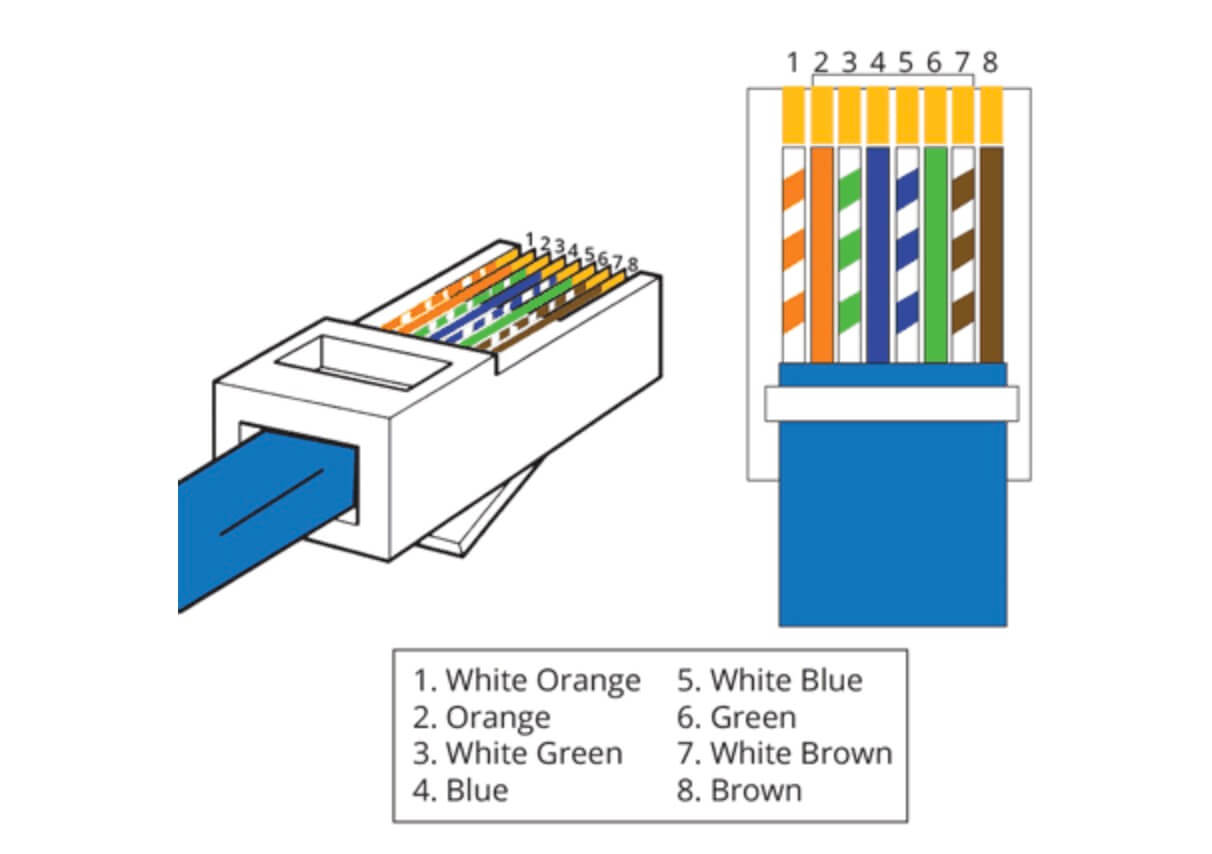
Products Order FAQS
How is your terms of payment?
Our terms of payment is usually via telegraphic transfer (T/T), but you can suggest other options that we may consider such as Letter of credit (L/C). We usually let the customer pay 30% in advance and 70% balance before shipping.
What's your delivery time?
Our delivery time is usually after 30 days, but special considerations for short orders may be accommodated for a shorter time. At OTSCABLE, we value intimate communications with our clients so that both parties are satisfied at the end of the day.
How about your price and MOQ?
About the price, it is best that you contact us, but at this early stage of wanting to know about our price range, we can assure you the best quality with the most competitive price you could ever find.
We have also special considerations for small orders so you won’t have to worry about MOQ.
Can I get the schedule of my order?
Sure, when we begin your order, we could tell you everything.
When will I receive my customs clearance documents?
After we confirm that we have received your remittance, we will immediately arrange a DHL shipping to your requested address.
Products Sample FAQS
How can i get the free sample?
The purpose of the business is Win-Win, we are glad to receive your email about enquiry, free sample, etc.
Which information do i must provide?
Name, Email, Company, Country, City, Address
Which express company do you have?
DHL, UPS, EMS, TNT, FEDEX or you can suggest.
How long does it take to my address?
One week is the usual duration before you can receive your free sample.
Why Choose OTSCABLE LAN Cables?
Choosing your LAN Cable supplier, OEM/ODM, contractor or wholesaler is like finding a needle in a haystack. There are tons of companies out there competing and promising the best low-priced high-quality LAN cables you could ever find.
Sure, there are a lot of LAN cable providers out there and we may not be exactly sure how good we rank among them, but here at OTSCABLE, we value transparency, customer-service and after-sales service. We have grown and prospered in the business of manufacturing LAN Cables for more than 17 years, continuously innovating and researching for more to find the best solutions for our customers. We have loyal customers from the Middle East, Africa, South America, Europe and many more.
Talk to us and we’d be happy to accommodate you in your long and tedious journey of finding the right China supplier of LAN Cables.
Industries Solutions


Data Center Cabling

Enterprise Networks

Optical Cable OEM
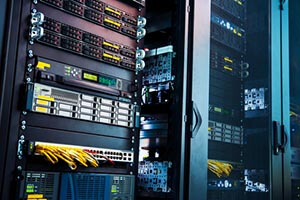
Optical Transport
Send Us a Message
Welcome to contact us by fill the right contact form or write to us directly by the contact info below:
+86 (0) 755-23769401
[email protected]

Send us a message if you have any questions or request a quote. Our experts will give you a reply within 12 hours and help you select the right product you want.

